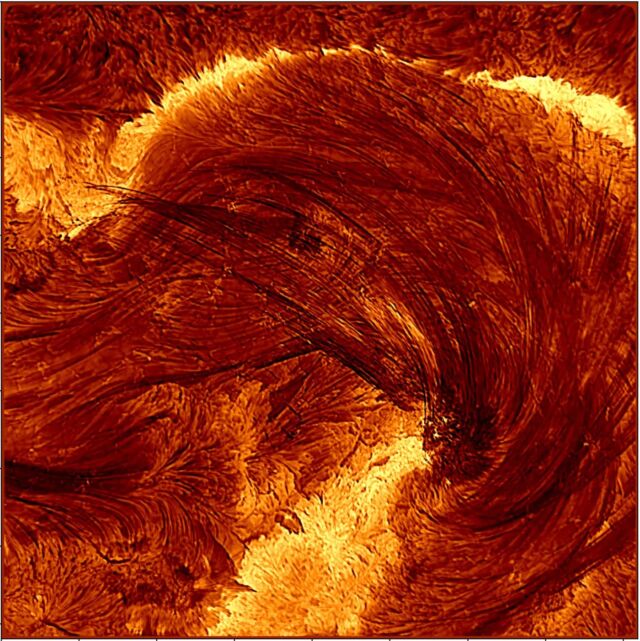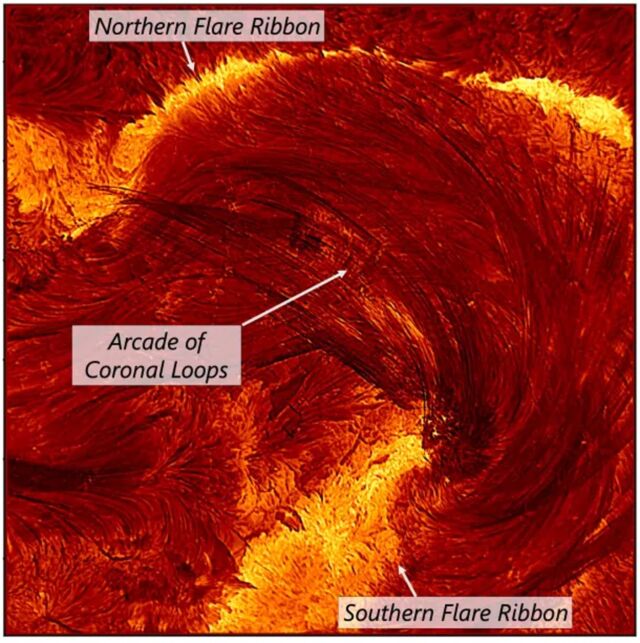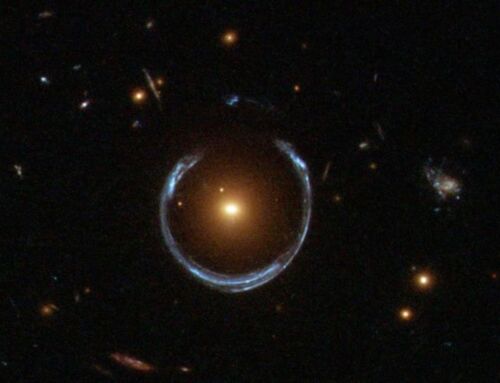 The full version of DKIST’s image of narrow coronal loop strands. The image length is about 4 Earth diameters. © NSF/NSO/AURA
The full version of DKIST’s image of narrow coronal loop strands. The image length is about 4 Earth diameters. © NSF/NSO/AURA
The NSF Inouye Solar Telescope delivers record-breaking, detailed images of Solar Flares and Coronal Loops.
The Daniel K. Inouye Solar Telescope (DKIST) has taken the sharpest-ever H-alpha images of a solar flare, capturing tiny dark strands in coronal loops for the first time—some only about 21 kilometers wide.
 The full version of DKIST’s image of narrow coronal loop strands. © NSF/NSO/AURA
The full version of DKIST’s image of narrow coronal loop strands. © NSF/NSO/AURA
These groundbreaking observations, made during the fading stage of an X1.3-class flare on August 8, 2024, reveal solar structures at scales never seen before. This discovery alters how scientists perceive the Sun’s magnetic complexity and could aid in improving space weather forecasts.
Using DKIST’s Visible Broadband Imager, researchers observed dark strands in the flare’s arc above the bright ribbons on the Sun’s surface.
From the 20 clearest images, they measured loop widths: the average was about 48 kilometers, the narrowest around 21 kilometers, and the most common size was about 43 kilometers. The loop widths formed a fairly balanced distribution around the average.
The paper was published in The Astrophysical Journal Letters.





Leave A Comment